Key takeaways:
- Gameplay tension is created through pacing, sound design, and unexpected events, leading to a deeper emotional connection for players.
- Tension keeps players engaged and influences decision-making, enhancing the overall narrative experience in gaming.
- Incorporating audio and visual cues, such as heartbeat sounds and flickering lights, can significantly heighten suspense and player anxiety.
- Effective use of player feedback loops, including vibrations for mistakes and rewarding sound effects, fosters a sense of urgency and mastery in gameplay.
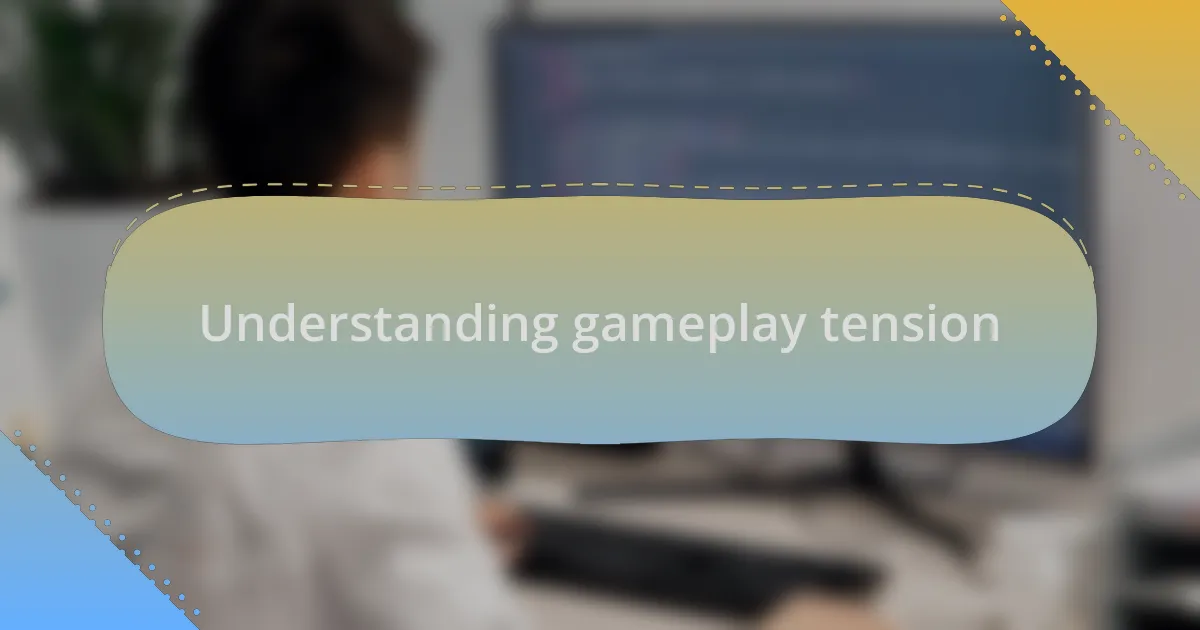
Understanding gameplay tension
Gameplay tension is all about creating a palpable sense of uncertainty and anticipation. I remember playing a survival horror game where every creak of the floorboards made my heart race. When you introduce elements that put players on edge, like dwindling resources or unpredictable enemy behavior, you heighten that feeling of tension.
One technique I’ve found effective is pacing. By carefully controlling the flow of action—balancing moments of calm with sudden bursts of intensity—you can make those climactic moments feel exhilarating. Think about it: when was the last time a game caught you completely off guard? Those moments stick with you, don’t they? That’s the power of tension in gameplay.
I’ve seen firsthand how sound design can amplify this tension as well. In one project, we used subtle audio cues to signal danger before players even saw a threat. That combination of build-up and payoff really changes how players connect with the game. It’s fascinating how anticipation can create a richer emotional experience, isn’t it?
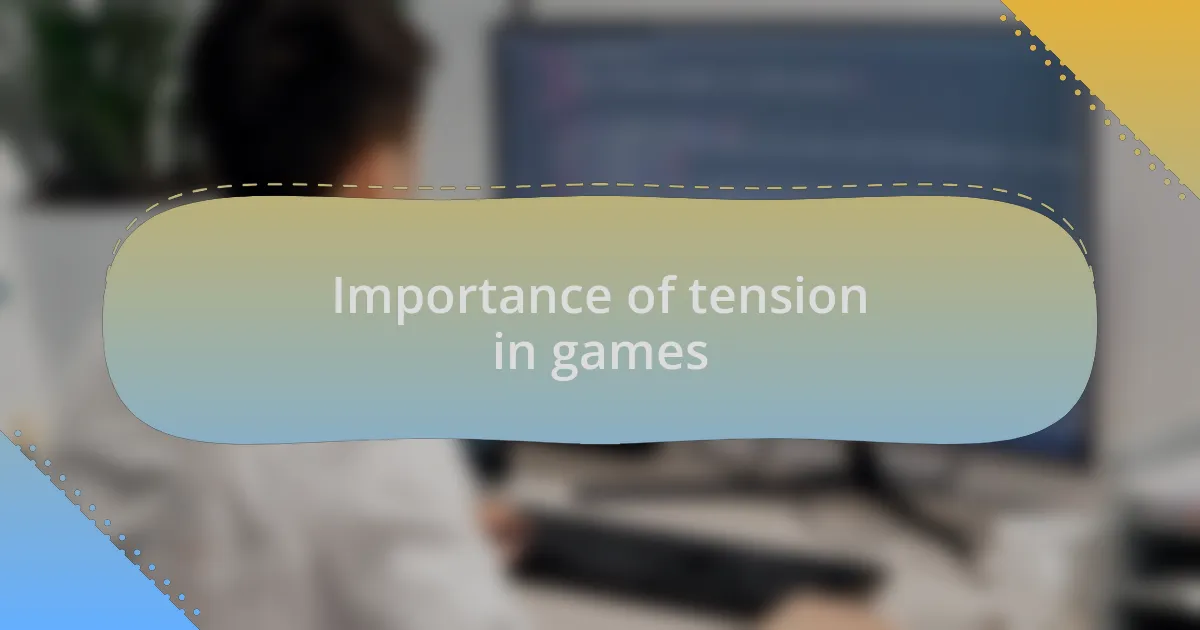
Importance of tension in games
Creating tension in games is crucial because it keeps players engaged and invested in the experience. I recall the adrenaline rush I felt during a stealth mission where each heard footstep made me wonder, “Did they see me?” This constant state of alertness not only maintains interest but also deepens the emotional connection between the player and the narrative, making every small victory incredibly satisfying.
Tension also plays a significant role in driving player decision-making. In one game I worked on, we introduced time constraints during a critical moment, forcing players to make quick, often stressful choices. The thrill of racing against the clock can evoke a sense of urgency, leading to memorable gameplay moments that players discuss long after they’ve put the controller down. Isn’t it interesting how the pressure of that ticking clock can heighten the stakes so effectively?
Furthermore, tension enriches storytelling by allowing players to experience a wide range of emotions. In a narrative-driven game, for example, the moments just before a pivotal character reveal can be filled with suspense, leaving players anxiously wondering what will happen next. I’ve found that it’s not just about the action but about how players feel throughout the journey. Isn’t it empowering to know that you can craft experiences that resonate deeply with players?
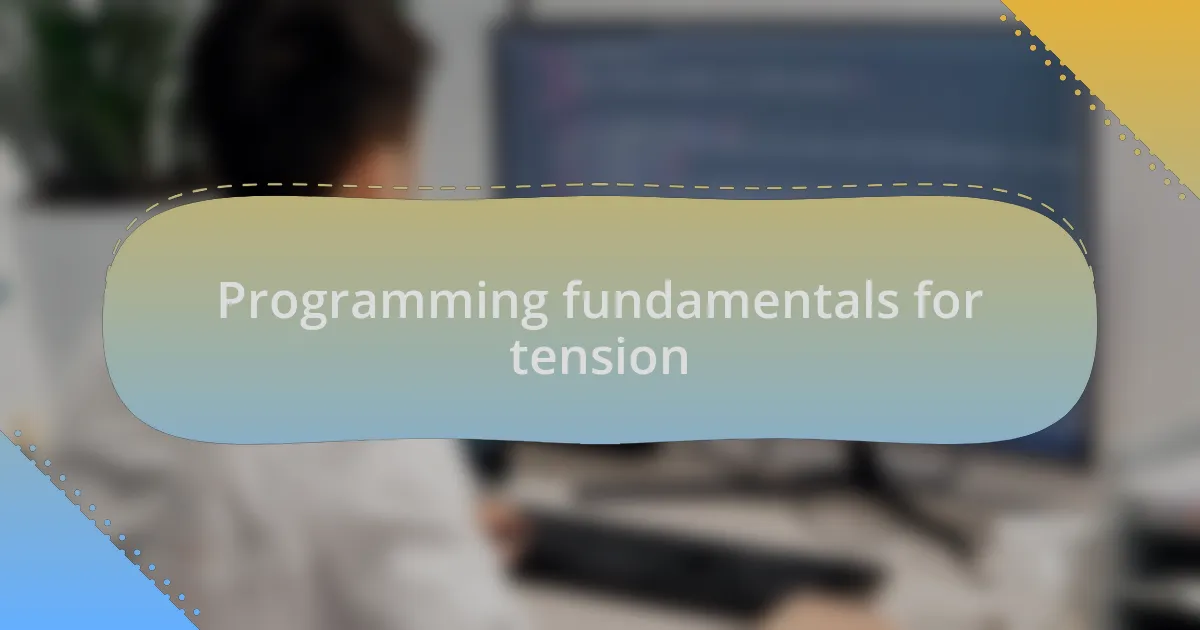
Programming fundamentals for tension
Understanding programming fundamentals is key to building tension in gameplay. For instance, I remember when I had to create a simple AI that would patrol a space, heightening the suspense for players. By manipulating its sight range and speed, I could make stealth moments feel genuinely nerve-wracking. What about your projects? Have you considered how adjusting these parameters can transform the player’s experience?
Timing is another critical aspect when crafting tension. I’ve often found that utilizing timers or countdowns in code not only adds pressure but can influence player strategy significantly. When I implemented a bomb defusal scenario, the constant ticking sound became a compelling force, pushing players to act quickly. Have you thought about how timing can shift a player’s mindset from calm to frantic?
Moreover, using events to control pacing can amplify emotional investment. In one of my games, I programmed a sequence where players encountered unexpected dangers that disrupted their progress. The surprise element kept them on edge, creating unforgettable moments. It’s fascinating how these subtle programming techniques can engage emotions so powerfully. What methods do you use to keep your players guessing?
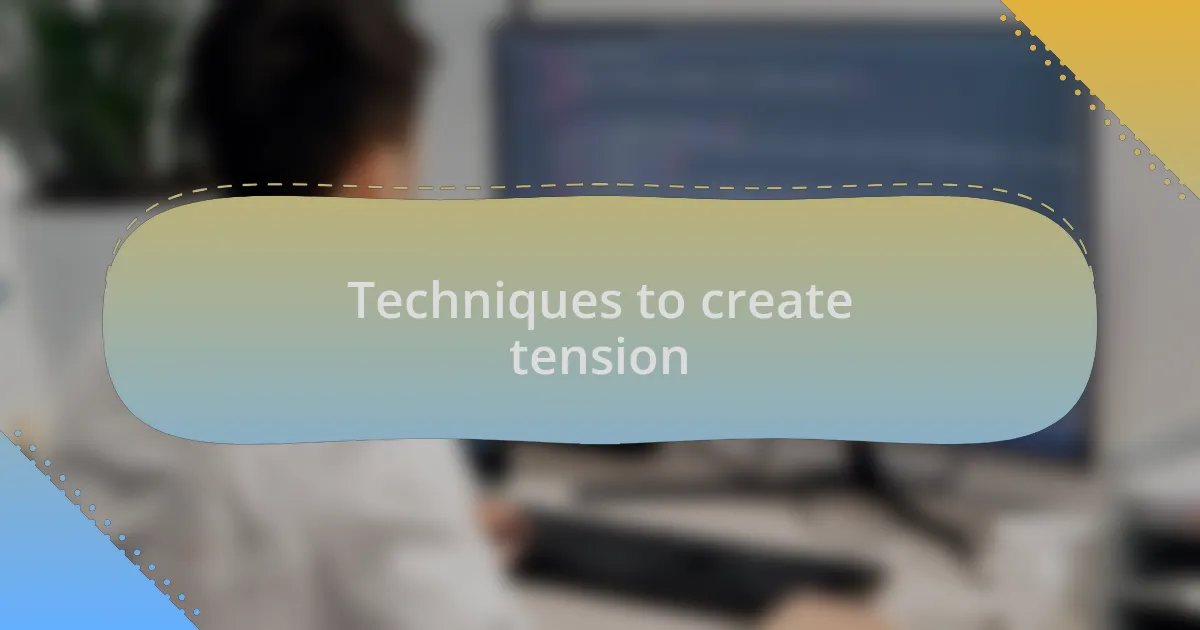
Techniques to create tension
One effective technique I’ve found for building tension is through environmental audio cues. When I developed a horror game, I included subtle sounds that intensified the atmosphere—like distant whispers or ominous creaks. These auditory hints can make players feel as if they’re being watched, creating a constant sense of unease. Have you thought about how sound design can elevate the stakes in your game?
Another approach I’ve experimented with is manipulating player choices under duress. I recall programming a scenario where players had to choose between saving an NPC or completing a critical mission. The weight of their decision added an emotional layer to the gameplay, making players second-guess their instincts. How do you ensure that the choices in your games resonate with the player’s emotional state?
Additionally, I’ve discovered that visual elements can contribute significantly to tension. In one of my platformers, I used lighting and shadows to obscure parts of the environment, creating uncertainty about what lay ahead. This technique not only keeps players alert but also fosters anticipation. Isn’t it intriguing how visual cues can heighten anxiety and curiosity simultaneously?
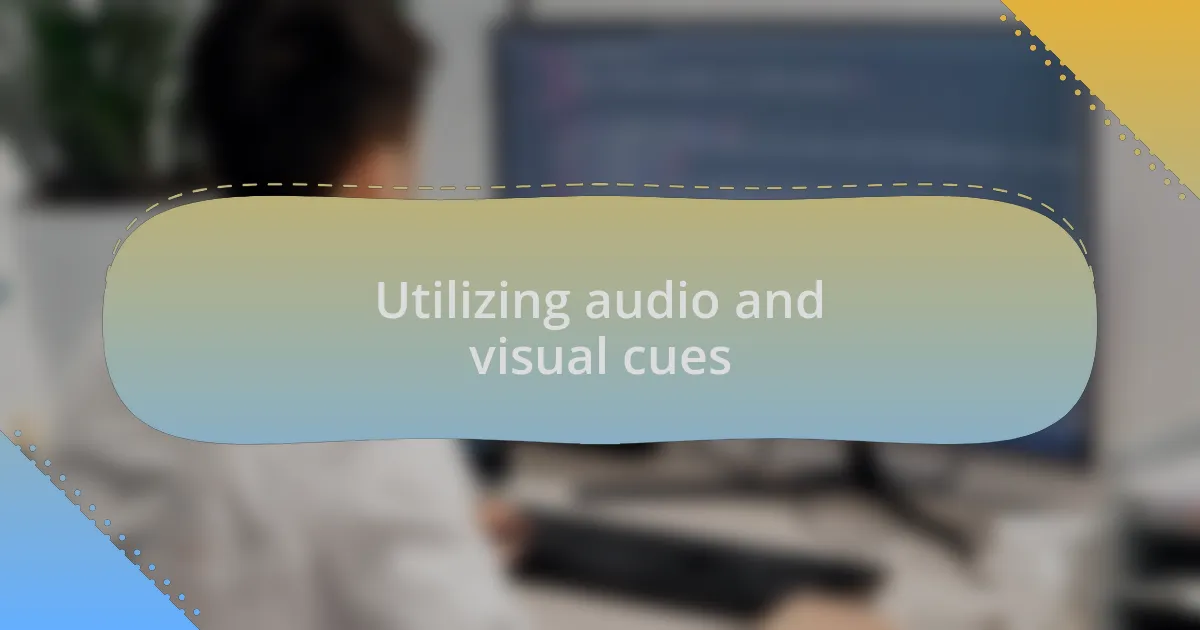
Utilizing audio and visual cues
Think about the moments when a suspenseful sound effect suddenly triggers your heart rate to increase. I vividly remember designing a stealth section in a game that included a subtle heartbeat sound growing louder as players approached dangerous areas. This audio cue created a visceral response, reinforcing the tension and urging players to be cautious. How often do we overlook sound effects that can genuinely change the player’s emotional experience?
Visual cues play an equally crucial role. In a project I worked on, I implemented flickering lights during a critical chase scene. The unpredictable nature of the lighting made players question their path and added a palpable tension to the gameplay. Have you ever noticed how a sudden change in visuals can make you feel like anything is possible in that moment of uncertainty?
One tactic I often rely on is the strategic use of ambient noise. During one level of a survival game, I layered sounds of rustling leaves and distant thunder to evoke a sense of foreboding. This was incredibly effective in immersing players, making them feel vulnerable and on edge. How can you leverage background sounds in your projects to amplify emotional responses?
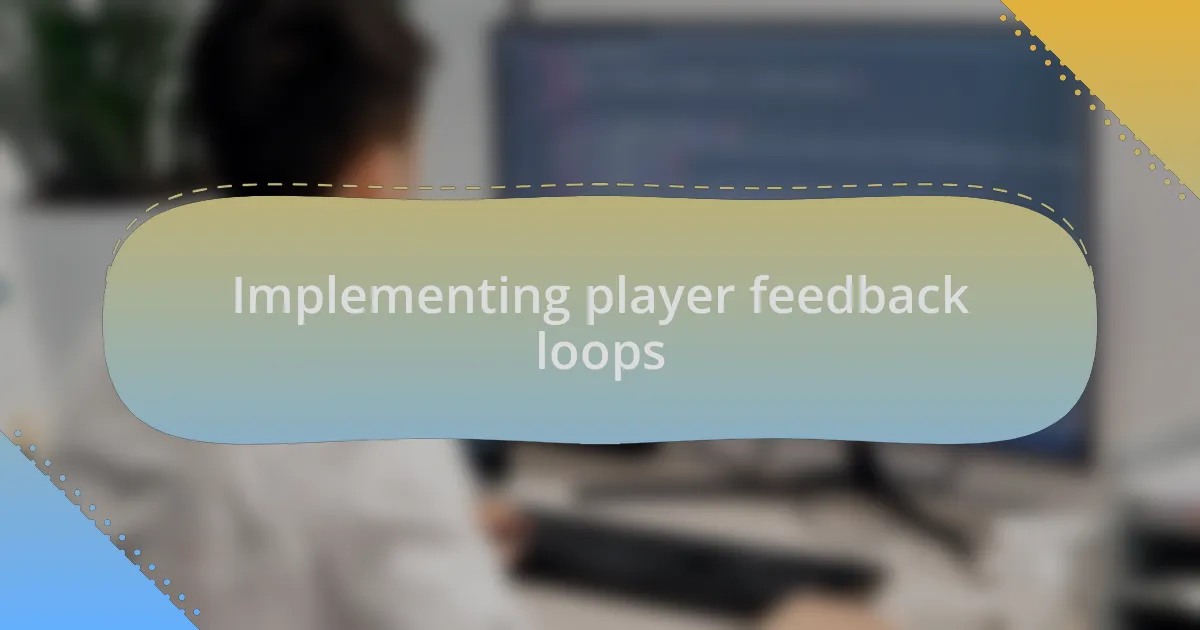
Implementing player feedback loops
When I think about player feedback loops, I recall a time I designed a racing game. Each time a player makes a wrong turn, I introduced a quick vibration from the controller. This simple feedback not only informed the player that they had veered off course but also created a sense of urgency to correct their path. Is there anything more frustrating yet engaging than a game that constantly reminds you of your choices?
I’ve also found that incorporating level-up sounds can have a profound impact. In one of my RPG projects, I made sure that the rewarding “ding” from leveling up was accompanied by a visual burst of color on the screen. This combo not only reinforced the player’s progress but also created an immediate emotional payoff. Have you ever noticed how that sensation of achievement can keep you hooked?
Another aspect I focus on is providing clear feedback on player actions through animations. In a platformer I developed, when players successfully executed a jump, the character would spin in mid-air, followed by a satisfying sound effect. It’s fascinating how these small victories build a feedback loop that encourages players to keep improving. What little touches have you added to your games to foster a sense of mastery?
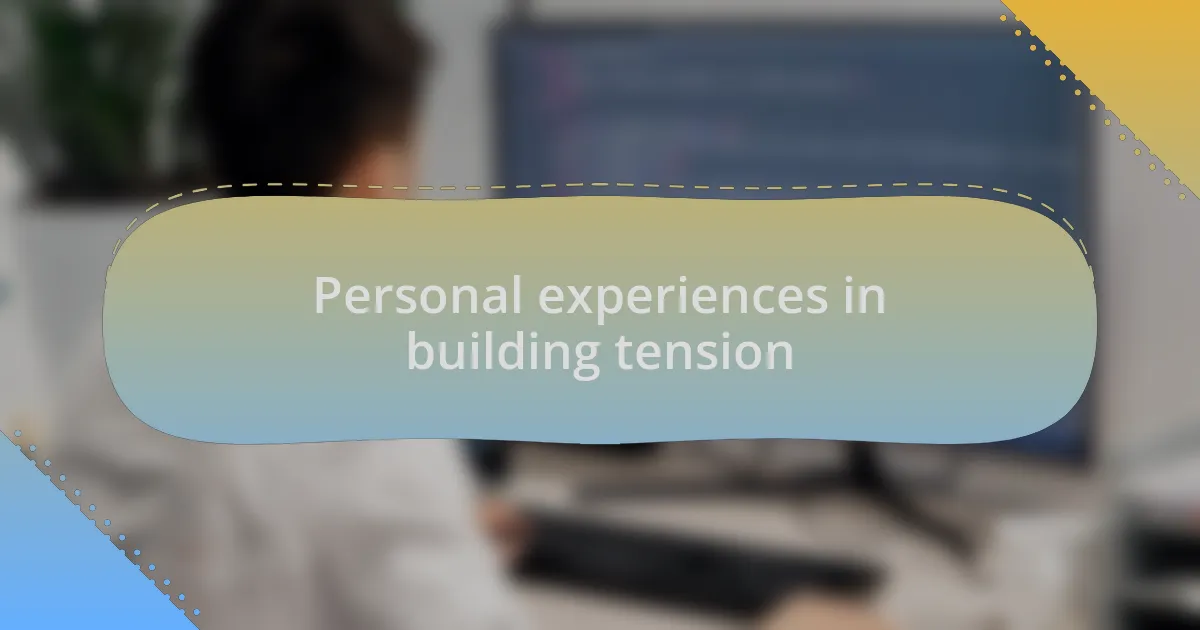
Personal experiences in building tension
When I think back to a horror-themed game I worked on, building tension was absolutely critical. I opted for subtle audio cues—like a faint heartbeat or distant whispers—to elevate the player’s anxiety as they explored dark corners. It amazed me how such simple sound design could transform a seemingly mundane moment into a spine-chilling experience. Have you ever felt your heart race at the slightest sound in a game?
In another project, I decided to limit visibility during a key chase sequence to ramp up the tension. By implementing fog that obscured the player’s view, I created an atmosphere where every step felt significant. That feeling of uncertainty kept players on edge, making the eventual escape all the more exhilarating. It’s fascinating how the mechanics of visibility can fundamentally alter a player’s emotional state, don’t you think?
I’ve also experimented with timed challenges to inject a sense of urgency. In one game, players had to defuse a bomb with a ticking clock looming over them. The pressure was palpable, and I distinctly remember the feedback I got on how that moment brought friends together. Can anything beat the thrill of racing against the clock and the palpable excitement that ensues?